View from the Hill 12th January 2020
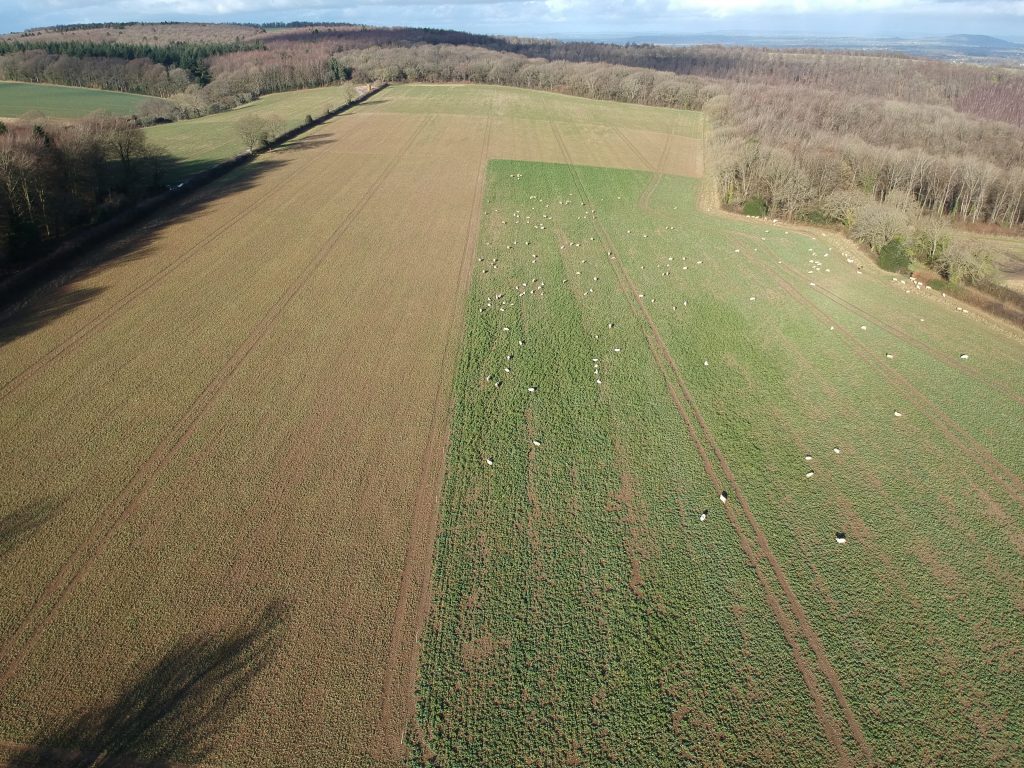
New year, new ideas.
Sheep are the new pesticide. They are eating off the parts of the oilseed rape plants that contain cabbage stem flea beetle larvae, they are also eating the leaves that in the mild weather have been incubating Phoma disease which can also burrow into the stem of the plant. To top it off they are eating the charlock weeds that have infested several of our rape fields. This all means that we can avoid the application of several doses of pesticide. The big question is will the rape plants grow back well enough to provide a reasonable yield at harvest ?
This a huge turnaround from the regular model of rape growing. In theory we can afford a lower yield because of reduced costs with sprays not used. Ask me after harvest what the consequences were.
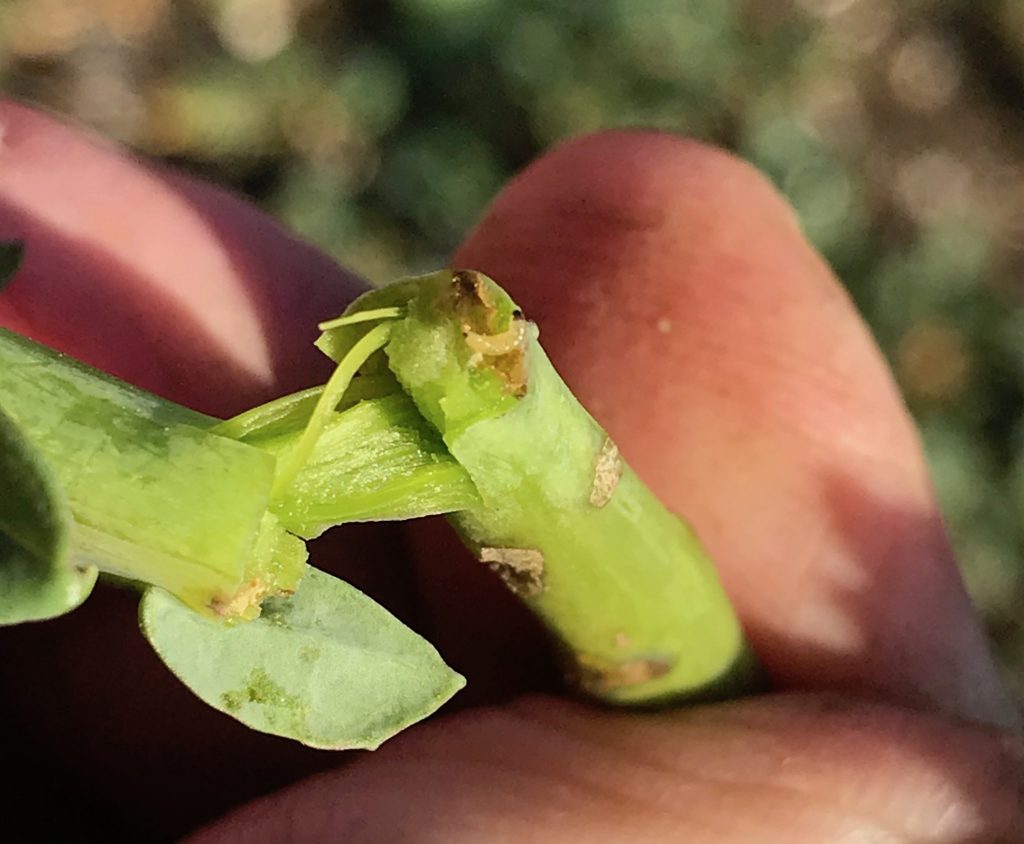
In the mean time, we are taking part in a country-wide trial to investigate the effectiveness of using sheep to control flea beetle larvae. One of our fields has been measured out accurately, and we have to fence off a block to be left ungrazed to act as a control for the experiment. At harvest time the yield meter on the combine will produce the spot yield for every square metre of the field, and this information can be used to show which treatment yielded better, grazed or ungrazed.
“Why haven’t you done this before” I hear you yelling ? Well grazing off one’s newly established rape crop when you haven’t done it before is bonkers, a bit like planting a fancy new shrub in your garden, and then immediately cutting off all its branches down to a stump and still expecting it to grow. But desperation in this case is breeding invention. Several mad farmers are already doing this kind of thing, it is because we can no longer use the pesticide on rape that kills the flea beetle larvae, but which has also been found to be harmful to bees, so it has been banned all across the EU.
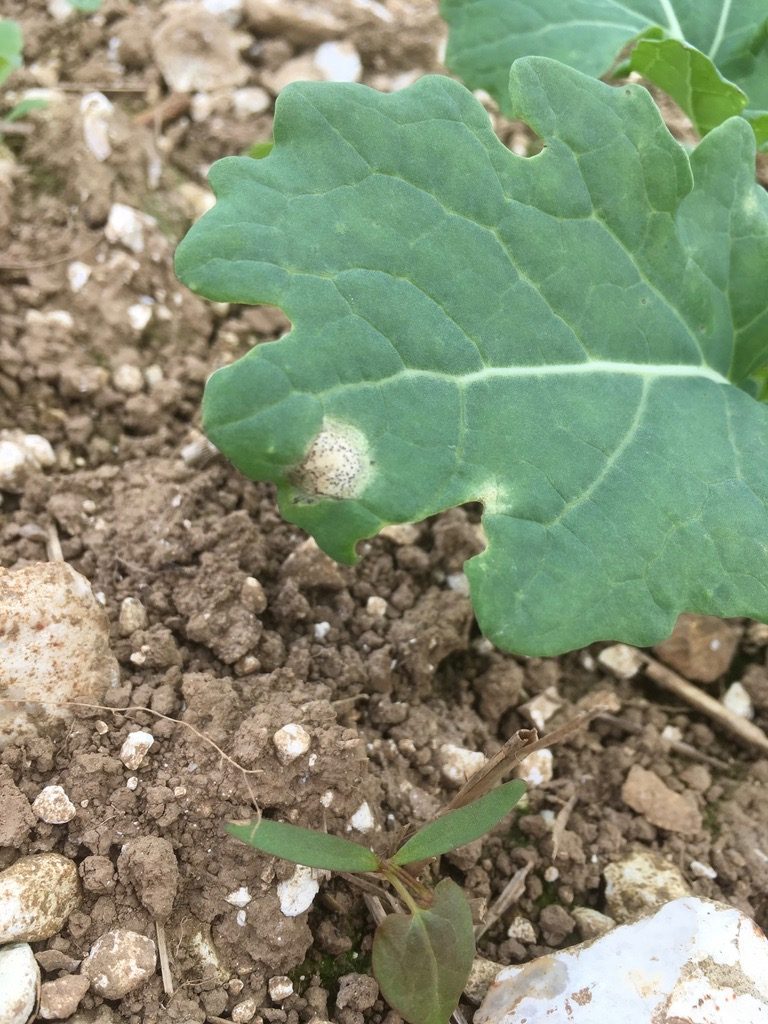
The trouble is in many other countries across the world, farmers are still allowed to use that same chemical on their crops, so their bees suffer constant headaches, or perhaps they even die. Some of those countries may want to export their oilseed rape to us, and because their yields are higher because they haven’t grazed off their crops in winter, they may be able to undercut our prices and sell it cheaper here. Is it right that they should be allowed to do this ? Just so that our bees will be ok, but theirs will be dead, and if you buy their oilseed rape oil, it will be your fault!

This is called exporting our environmental responsibility, and it applies to many other crops and animal products too. Now we know we are leaving the EU, and the government is about to start negotiating future trade deals, this explains why farmers are right now jumping up and down and calling for the government to ensure the above scenario does not occur. If farming is to continue in the UK, we will need controls at our borders to ensure that imported foods have not been produced by methods that are illegal for farmers to use here. On the positive side, the secretary of state for DEFRA has said recently that the government understands this and will not allow such foods to be imported. I hope we can trust her.
However it is worth pointing out that this principle has form. GM crops were outlawed in Europe 20 years ago, yet since then many millions of tons of GM soya have been imported into Europe to feed farm animals, and chemicals that were banned in Europe long ago are still used widely elsewhere around the world on a wide variety of crops which are freely traded between many countries. So how are we to sort this ? Someone needs to get a grip.
Soya is a high protein crop, it contains 48% crude protein, which explains why it is so popular in animal diets. It does not grow in the UK climate, the best we can produce is rapemeal, at 35% CP, but we don’t produce a huge amount of it. Next comes beans, at 25% and Peas at 21%. Wheat and barley are around 9%.
Most of the soya used in the UK comes from Argentina and Brazil, and most of the soya grown there is GM. Some people say that in some places soya is grown on land only recently cleared of rainforest.
65% of the more than 3 million tonnes of soya imported into the UK every year goes to chicken and pig production, so how environmentally friendly is that compared to beef and lamb fed on UK grass?
We can grow high protein crops like beans (25% protein), peas (21% protein) and lupins in the UK, the problem is they don’t pay. It is cheaper to import soya. With the new Agriculture bill about to return to parliament, should we be campaigning to support the growing of beans? They are a legume, which means they can harvest the nitrogen they need for growth from the air, and need no artificial nitrogen fertiliser to make them grow. They are a great break crop and enable a good crop of wheat to follow in the rotation, and they are good for soil health. I call it a potential win-win-win.
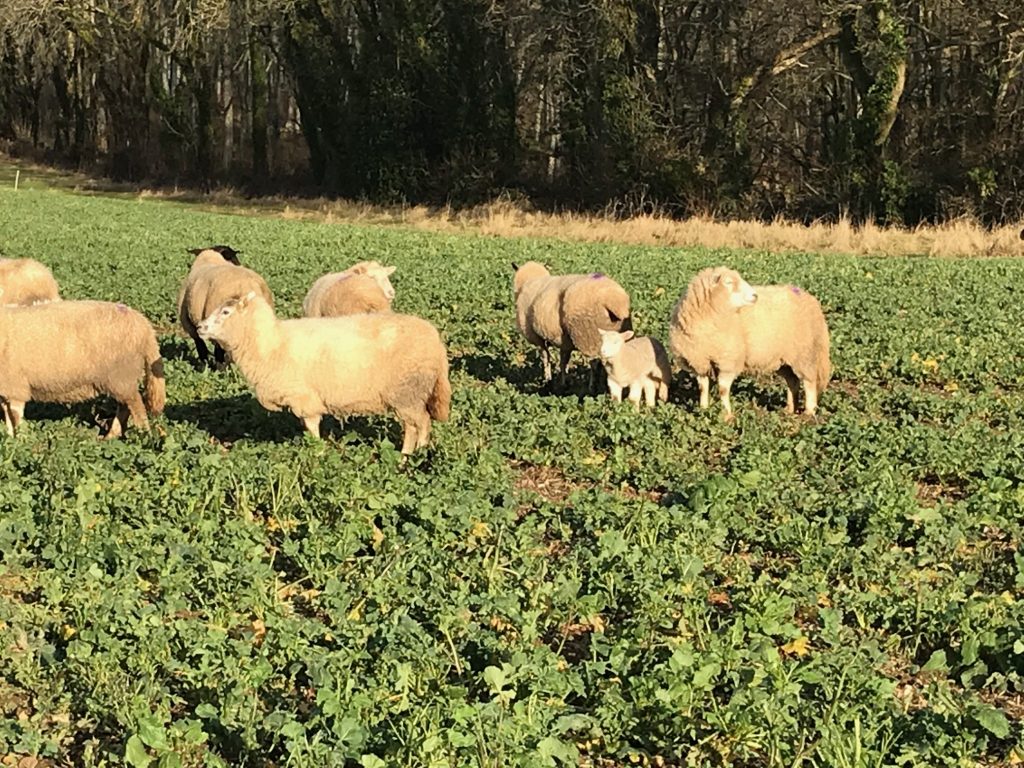
Late news from the sheep: The rams arrived in the first week of December, and joined our new ‘improved Welsh’ ewes in the oilseed rape field, lambing should begin in the first week of May. Over Christmas the farm whatsapp group lit up with news of lambs. Normally sheep have a gestation of 5 months, it seems the improved Welsh have got it down to 3 weeks.
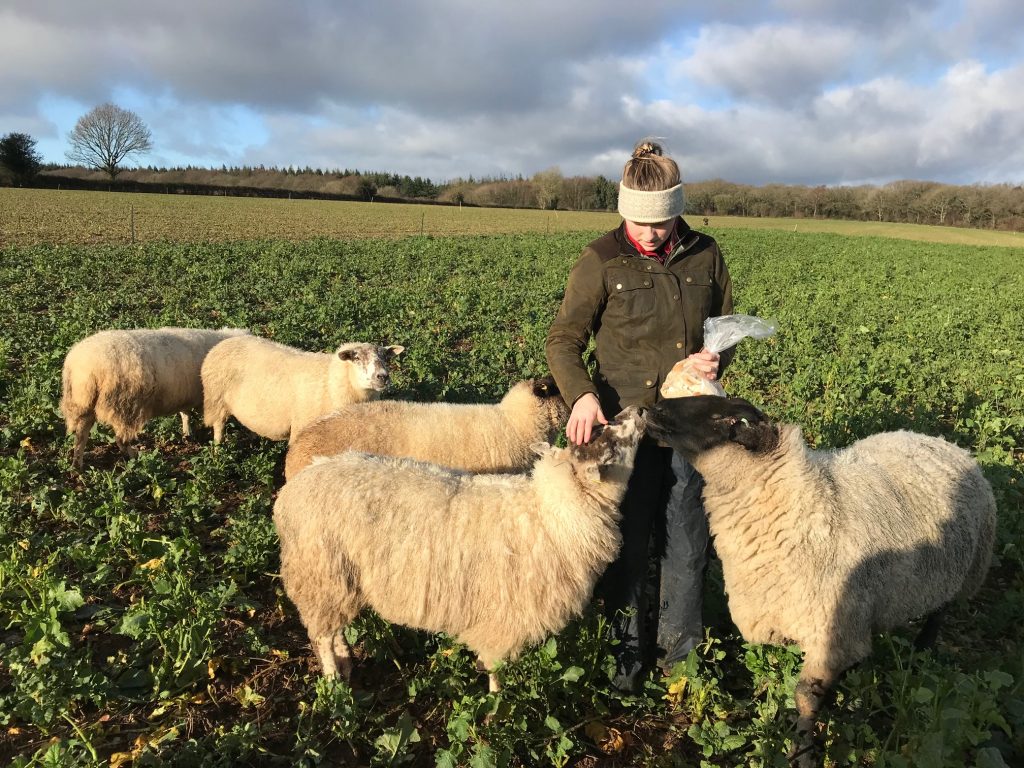
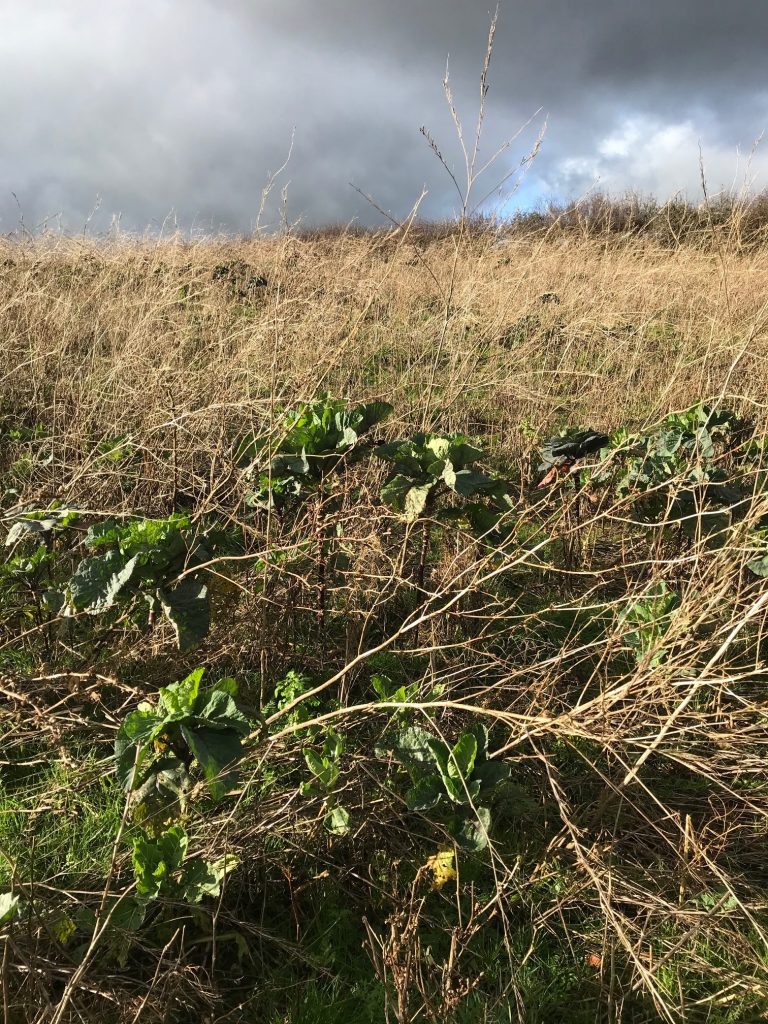
Bird food crop containing chicory and kale. The chicory provides small seeds and good shelter as it stays upright all winter, and the kale will produce a big seed crop this summer. Other plants in this 2 year mixture provide food over winter.
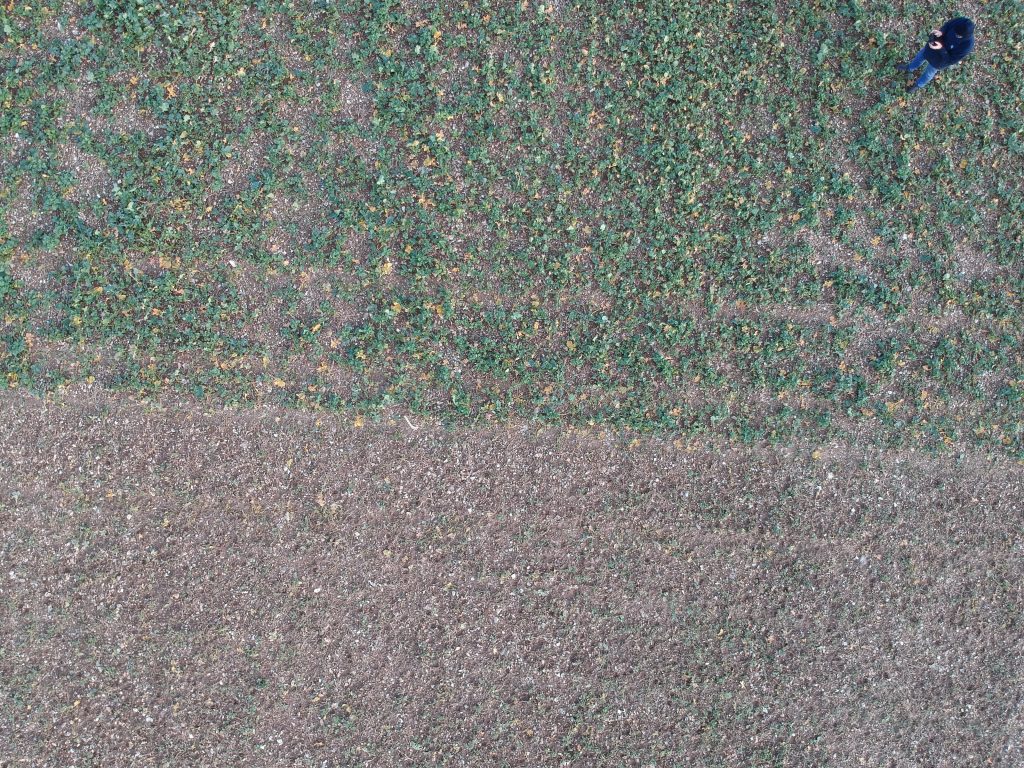

George your positivity is impressive. When can I come on a winter farm tour?
Good luck with the sheep trial, they can help, we have grazed winter barley in the past that was too forward.
With that it was OK as long as you took the sheep away the day before they did permanent damage.
Can chickens we used to clear the rape – foxes allowing? If so you would get the benefit of GM free non soya fed animal protein from a very efficient converter – unlike sheep.
Dear George
Farmers in Sussex were grazing off their rape, and their cereal crops, 40 years ago. I remember asking one such neighbour why he did this, I must have been an infant then, and he muttered about learning from his Granfather that it gave a better crop with less disease. Though it is unlikely his Granfather grew rape…he definitely grew malting barley…also on the chalk.
Anyway, as usual, your approach is carefully evaluated and well executed, and charmingly explained in The View. Despite lagging behind the men of Sussex you are still a star!
Your comments about exporting our footprint are spot-on
I was on he farm on Friday the 24th, and could see sheep on the oil seed rape, as i am familiar with the said field. I thought what on earth are they doing n the rape, have they escaped from a neighbouring field ?
, this was before reading your article.
Now you have explained in excellent detail i understand the reason.
Thank you George how i learn every month about something on the farm
Thank you